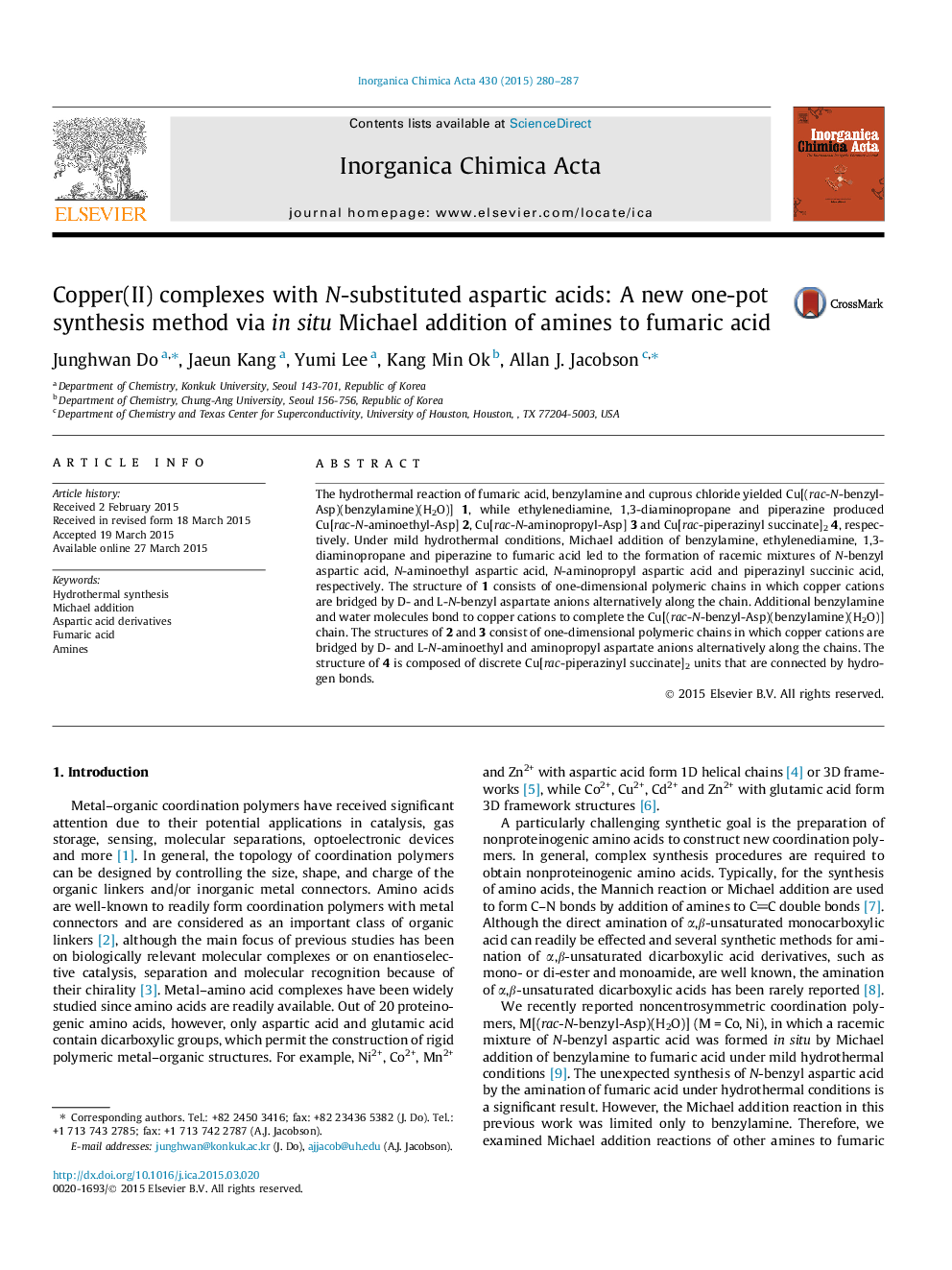| کد مقاله | کد نشریه | سال انتشار | مقاله انگلیسی | نسخه تمام متن |
|---|---|---|---|---|
| 1309135 | 1499159 | 2015 | 8 صفحه PDF | دانلود رایگان |

• Michael addition of amines to fumaric acid hydrothermal synthesis.
• in situ synthesis of N-substituted aspartic acid copper complexes.
• Crystal structures of four new copper(II) aspartates.
The hydrothermal reaction of fumaric acid, benzylamine and cuprous chloride yielded Cu[(rac-N-benzyl-Asp)(benzylamine)(H2O)] 1, while ethylenediamine, 1,3-diaminopropane and piperazine produced Cu[rac-N-aminoethyl-Asp] 2, Cu[rac-N-aminopropyl-Asp] 3 and Cu[rac-piperazinyl succinate]24, respectively. Under mild hydrothermal conditions, Michael addition of benzylamine, ethylenediamine, 1,3-diaminopropane and piperazine to fumaric acid led to the formation of racemic mixtures of N-benzyl aspartic acid, N-aminoethyl aspartic acid, N-aminopropyl aspartic acid and piperazinyl succinic acid, respectively. The structure of 1 consists of one-dimensional polymeric chains in which copper cations are bridged by D- and L-N-benzyl aspartate anions alternatively along the chain. Additional benzylamine and water molecules bond to copper cations to complete the Cu[(rac-N-benzyl-Asp)(benzylamine)(H2O)] chain. The structures of 2 and 3 consist of one-dimensional polymeric chains in which copper cations are bridged by D- and L-N-aminoethyl and aminopropyl aspartate anions alternatively along the chains. The structure of 4 is composed of discrete Cu[rac-piperazinyl succinate]2 units that are connected by hydrogen bonds.
Copper aspartates synthesized by in-situ Michael addition of amines to fumaric acid under hydrothermal reaction conditions.Figure optionsDownload as PowerPoint slide
Journal: Inorganica Chimica Acta - Volume 430, 1 May 2015, Pages 280–287